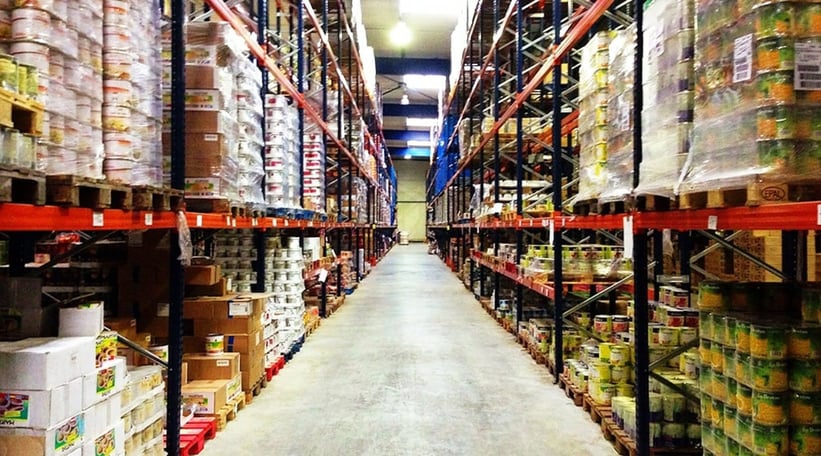How to increase margins in your food distribution company
The changing demand for organic, fair-trade or locally sourced products, as well as changing food industry regulations, are putting a strain on food and beverage distribution companies. Coupled with the perishable nature of many products and the power of major grocery chains, increasing margins can be a challenge. Data analytics is proving to be a powerful way for food and beverage companies to predict changes in demand and respond accordingly.
In this blog, we will discuss key strategies you can implement with data analytics to ensure that your company will meet these new challenges and prosper.
Increase sales
Identifying new cross-selling opportunities is one of the quickest ways to boost revenue. Analysis of your customers’ purchase history will reveal which products customers should be buying but aren’t. You may find you have a customer who is consistently purchasing hot dogs and buns, but not the complementary condiments. Making a cross-selling offer to this customer is an effective strategy to increase revenue.
A critical, and often overlooked, strategy to increase sales is to prepare for sales meetings adequately. Due to time constraints, sales reps often go into their sales meetings with a cursory understanding of the customer’s needs. However, a rep may have only a few minutes to meet with the customer to secure a new order. Therefore, adequate preparation for the meeting is critical.
A high-quality mobile accessibility of Phocas, your reps can prepare for their meetings on the go.
Avoid and eliminate dead stock
Managing your inventory with greater precision will result in significant cost-savings. Raw materials that are on- site too long are in danger of becoming inventory. Full transparency enables your company to monitor each product’s lifecycle, comply with safety regulations and improve your forecasting.
Increase efficiencies
Improving efficiency should apply to all departments for cost-savings. Reports, for example, are traditionally generated by the IT department. Once a report is requested, it can take several days for IT to deliver it. The data is often outdated by the time the reporting process, including asking for further detail, is complete, rendering the report of little value. This traditional reporting method gives little actionable insights given the nature of static reports. However, BI reports can be created and shared in a matter of minutes. Insights gleaned from accurate and up-to-date data can save you money and increase revenue. BI can also be used to streamline procedures and improve efficiency in other departments, as well.
Avoid risk with business intelligence
Continuing to rely on outdated business solutions to run your food and beverage is risky. These systems limit your ability to respond to an unforeseen shift in today’s rapidly changing marketplace like the forced shutdown of cafes and restaurants during the pandemic. Disruption can result in the unexpected expense of dead stock, delays in shipment, and poor customer service. Food and beverage distributors must have access to accurate, real-time insight into their business to stay on top of trends, control costs and improve purchasing decisions.
By implementing a BI solution like Phocas, you can monitor stock turns, slow-moving stock and GMROI, sales revenue and more by product group, manufacturer, product, territory, and store. With Phocas, you can minimize dead stock and save declining customers while identifying new sales opportunities. Accurate forecasting, refined inventory management, and an easier way to find sales opportunities are the secret ingredients necessary to increase your margins.


Mike works with Sales, Finance, IT and Business Leaders who are keen to optimize their business intelligence and data analytics capabilities. He has helped many businesses drive sales and find opportunities within their data.
Related blog posts

Manufacturers, distributors and retailers rely heavily on their suppliers to deliver quality products on time and at the right price. Strong supplier relationship management (SRM) is essential for these industries because it enables you and your suppliers to map out the supply chain, achieve economies of scale and offer customers an extensive choice of products.
Read more
DIFOT (Delivered In-Full, On-Time) or OTIF (On-Time In-Full) is a fundamental KPI when analyzing the performance of your supply chain. The main goal is to get your customers the products they need, when they need them, in the quantity they ordered. DIFOT measures how successful your business is at achieving this objective and identifies procurement problems and supplier reliability.
Read more
Picture a football coach preparing for the big game. He watches game‑tape, studying player metrics, analyzing every play and using real‑time stats to inform strategy. That’s exactly how sales managers and sales leaders should approach their coaching program—with a data‑driven approach.
Read more
The U.S. wholesale distribution sector is experiencing a rapid acceleration in mergers & acquisitions (M&A) activity. From HVAC buying groups like Johnstone Supply acquiring independents, to family-owned distributors selling due to succession challenges, consolidation is reshaping the distribution landscape. One recent example is Hein Electric Supply's acquisition of Laser Electric Supply highlights how strategic buyers are capitalizing on opportunities across the middle market.
Read moreBrowse by category

Find out how our platform gives you the visibility you need to get more done.
Get your demo today